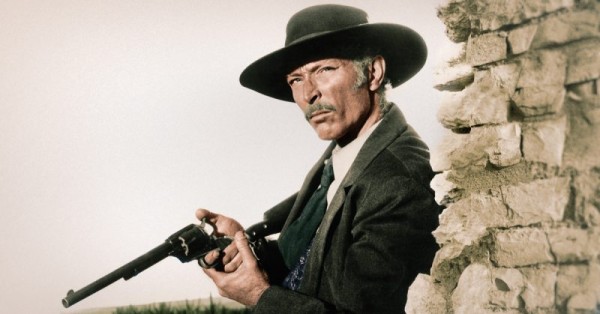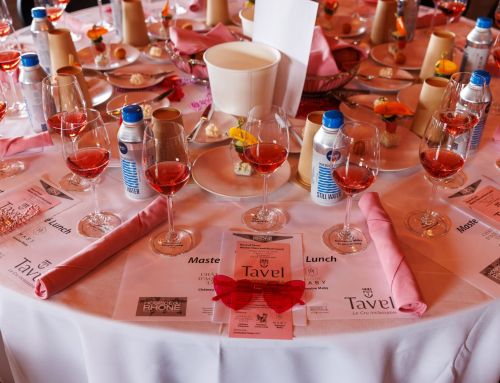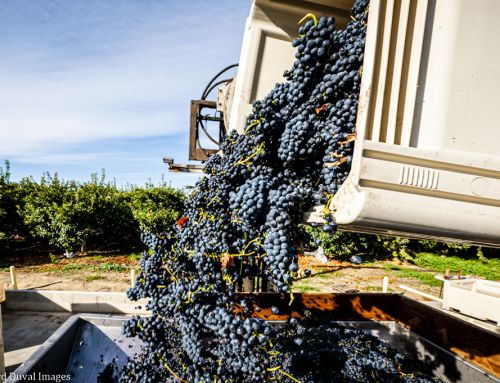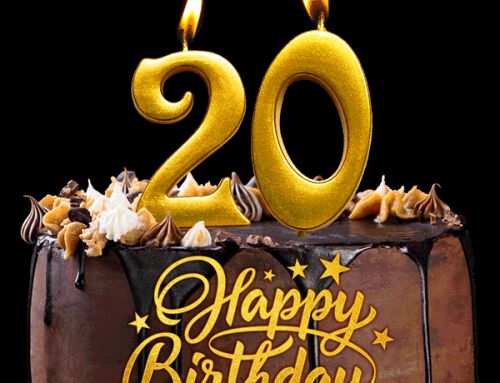 This is the second in a three-part series on Washington wine. Read part I. Read Part III.
This is the second in a three-part series on Washington wine. Read part I. Read Part III.
There has been a great deal of handwringing and soul searching in the Washington wine industry since Ste. Michelle Wine Estates told growers this summer it was canceling 40% of the company’s fruit contracts. Much of it has focused on what the implications might be for the state and what needs to be done now to get Washington to the next level.
In the first article, I explored what the Washington wine industry has done well. Here, I explore what Washington has done less well. You will note that many of the state’s challenges are directly tied to aspects that have made the state successful thus far, listed in the first article. As before, I have limited the list to 10 items.
Washington wine: The Bad
1. After 50 years, Washington has yet to gain greater national and international awareness for its wines.
There is no question that Washington wine has come an extremely long way in the last 50 years. Still, the state should have come further, particularly in recent years. The quality of the wines is high, but overall awareness remains stubbornly low.
If one goes to retail shops around the country, they will often be hard pressed to find many or sometimes any Washington wines on the shelves. To the extent they are there, they are often from larger producers or a few well-known brands, established decades ago. Washington wines are also underrepresented on restaurant lists. There are, of course, numerous exceptions to both.
Overall, Washington wine seems to be on the precipice of greater awareness. However, it has seemed to be on this precipice for quite some time without being able to get to the other side.
2. Too few Washington wineries have established reputations with broader wine consumers.
If one asks sommeliers or others in the trade around the country about Washington wines they have tasted or heard of, the list is short in many cases. It is also likely quite similar to a list of names that people might have given 15 years ago. For many consumers, the list would likely be considerably shorter.
Similarly, if one looks at the resale value of aged Washington wines at auction, only two or three producers show any real appreciation over time. This speaks to the lack of recognition and is particularly a shame as Washington wines age so beautifully.
For people to appropriately value Washington wines, they need to be more familiar with them. Right now, not enough people are.
3. There are too few mid to large-sized producers in the state, contributing to lower national awareness.
Of Washington’s 1,000+ wineries, 90% of them make less than 5,000 cases per year. Moreover, the list of wineries that produce 50,000 cases or more is exceedingly small. Due to the limited production of almost all of the wineries, most are selling little of their wine outside the state. How can Washington wine grow its awareness if consumers across the U.S. aren’t even seeing bottles on the shelves?
The limited production of most Washington’s wineries has greatly hampered the state’s attempts to increase awareness of its wines. For the state to get over the hump, consumers must see bottles from Washington, try them, like them, and then be able to find wines from other producers to try. Right now, in too many cases, the state isn’t even getting by that first step.
4. Too few Washington’s appellations have meaningfully distinguished themselves with consumers.
I wrote about Washington’s success identifying unique growing regions within the Columbia Valley, with the state now home to 20 appellations. However, to date, too few of Washington’s appellations have distinguished themselves in the eyes of trade or consumers.
To do this, people must recognize the appellations on the label and also have some sense, if even a vague one, of what makes that area unique. At minimum, they must associate the appellation with making high quality wine. By almost every measure, most Washington appellations haven’t met this bar as of yet. In fairness though, it’s still early days for most of these regions.
5. Washington doesn’t make enough mid-priced wines.
Ste. Michelle Wine Estates, and others, have excelled at making entry-level wines, albeit being unable to compete on price at the lowest tier with California. (Who wants to?) The state’s legion of boutique wineries, meanwhile, make an outrageous amount of high quality red wines that cost $40 and up.
The problem, however, is that there is a large void in the $20-$35 space of moderate to higher production, quality wines. (Note, I am mostly talking about red wines, as whites are traditionally are less expensive in Washington.) Yes, there are wines in this category out there, but they are limited in production and often gone in the blink of an eye.
Most consumers interested in a new wine region need to be marched up the price ladder. It’s a lot to ask for someone to pay $40+ for a region they are unfamiliar with. Unfortunately, it’s difficult for many small wineries to make wines in this price range and have it make sense financially.
6. There are too few producers making wine at the upper reaches of quality that capture media and wine connoisseur attention.
Washington is home to over 1,000 wineries, and many of them make very high quality wine. However, too few producers are making wine at the very top levels of quality.
If one looks at wine ratings, it is traditionally the usual list of suspects that sit atop the list. The biggest problem? The list often looks about the same as it did 15 years ago, despite the state adding hundreds of wineries.
Regardless of what one thinks about the value of wine scores, it is often high-scoring wines that capture the attention of connoisseurs, people in the trade, and national media. For better or worse, it forces them to pay attention. Washington needs more wineries working at the highest levels.
7. Too few producers are estate vineyard based, which is one way to drive higher quality.
Washington wineries generally not being tied to estate vineyards has allowed wineries to start up quickly and have success. However, the only way to elevate wine quality in the long-term is in the vineyard.
Many growers have excelled at partnering with wineries to grow grapes how the wineries want. This is different, however, than a winery having full control over what is planted, where it is planted, what clone is used, how it is farmed, and when it is harvested.
The only way that the state will achieve higher heights with its wines is in the vineyard. Right now, that is a challenge, as too few wineries have full control over the vineyards they source fruit from. This is also unlikely to change substantially any time soon.
8. The recent focus on direct sales risks making wines that are ultimately over-priced for the national market.
Washington has historically offered high quality-to-price ratio wines. However, in recent years, many wineries have pulled in from distribution and started to sell most or all of their wines direct-to-consumer. This trend has been accelerated by laws that have allowed wineries to have more satellite tasting rooms. It has also been accelerated by distributor consolidation.
For wineries, the advantages of selling direct-to consumer are clear. They receive a much higher percentage of the sale and are also able to charge prices that would never be viable in distribution. However, Washington risks making its wines non-competitive nationally and internationally if prices get too high. Who wants to buy very expensive wine from a region if one is wholly unfamiliar with it?
9. Washington’s success, at present, is overly tied to Ste. Michelle Wine Estates.
There’s an old saying in Washington that, as goes Ste. Michelle, so goes the Washington wine industry. For more than 50 years, it’s been true. Ste. Michelle Wine Estates makes the majority of the state’s wines. The winery has contracted with the majority of the state’s vineyards.
That’s worked well when the state was continuously expanding. Ste. Michelle opened doors, and the state’s army of small wineries marched through them. Now, however, the winery is at an inflection point and needing to focus its own issues. It leaves the state’s wineries, and even more importantly its growers, to fend for themselves.
As I’ve written previously, the decoupling of the state’s fortunes from Ste. Michelle will be a painful step. If anything, though, it’s likely best for the industry. It might also be the clearest way to help Ste. Michelle succeed in the long-term.
10. Washington wine suffers from a chicken-and-egg problem.
Washington’s biggest problem at present is that the state can’t get greater recognition for its wines until there is more demand. However, it can’t get more demand until there is greater recognition. This is a very difficult loop to break out of, particularly when availability is scarce.
If trade and consumers taste the wines, the battle is won. The problem is that not enough people can taste the wines. If they can, it’s a problem finding others.
At present, the state is trying to spark interest in its wines without having that fuse lead to a wealth of wineries positioned to take advantage if that spark catches. As a result, many efforts fizzle. That is likely to continue until some of the fundamentals of the industry change.
* * *
We’ve now covered what Washington wine does well and what some of its challenges are. Next up, some areas the state is falling well short.
NOTE: Northwest Wine Report is now partially subscription-based. Please subscribe to support independent content and reviews on this site. It’s the only way that this site can continue.
To receive articles via email, click here.







Very interesting points. Greater name recognition for wineries is a two edged sword for the average wine consumer like me. It is hard to find a “recognized” Napa Cab for under $100 and Sonoma is not far behind. Maybe the Washington small producer model is best for the average wine consumer here in the Northwest?
Jeff Clausen, there’s no doubt that Washington wine lovers have been the beneficiaries of the state not gaining more prominence. For example, I recently purchased at auction three wines from prominent Washington wineries, with the bottles ranging in age from 24-30 years. My purchase prices? $5 over original retail, $20 under original retail, and $5 under original retail. These were all uncontested bids. That’s *great* for me. Unfortunately, it’s terrible for the Washington wine industry.
Great article and on point. I’m currently visiting Napa and Sonoma and am surprised how little is known about Washington wines when I mention them other than a few producers. I especially like your comment about “a large void in the $20-$35 space of moderate to higher production, quality wines.”
Great analysis. I guess the distribution could also be a problem. In central Ohio, we could easily find Washington wines from Quilceda Creek to Soos Creek in groceries and wine stores 10 to 15 years ago. I can hardly find any interesting Washington wines now–except for a few such as Ste. M. or K Vin. wines; the shelves are packed with even more California wines. I don’t know what makes the change, but it is just so sad.
I’m glad you wrote this series of articles, Sean!
With so many smaller wineries that make less than 5000 cases, it’s hard for Washington State Wine and local wine alliances such as Woodinville Wine Country, Walla Walla Valley Wineries, Lake Chelan Wine Valley etc. to pay to take Washington wine on the road to more places. They make trips to Seattle and Portland and other nearby areas, yes.
It would be great if everyone would chip in to send a refrigerated wine truck and a small convoy of wine professionals and tasting pourers to Las Vegas, Palm Springs, California, and big East Coast cities to invite restaurateurs, sommeliers and local wine bloggers/influencers to taste the wine, host “Walla Walla Wine in Seattle” and “Lake Chelan Wine in Bellevue” type events.
But it’s a hard sell when there aren’t any demonstrable immediate benefits to all the $ you just spent – “Oh, this restaurant bought 10 cases because they tasted our wine in Dallas last week” doesn’t necessarily happen. It would take time to get the people who tasted and enjoyed the wine to actually write about it, promote it, suggest it, get it on the shelves, etc. and you might not be able to make the connection between the pouring and teaching about the wine and the final sales.
VERY expensive proposition, yet gourmet food producers spend the $ to take their foods to be tasted at the Fancy Food Shows on both coasts, for example.
It’s not enough to just ship bottles to important wine/restaurant people either hoping they’ll taste and enjoy. Having actual Washingtonian wine experts on hand to passionately teach about the wines they are pouring would make all the difference. How do we get Washington State wineries to spend $ for this?
Are we (Washington State wineries as a whole, not individual big wineries) spending $ to advertise Washington State wine in wine magazines, travel magazines, food/wine magazines?
And when I go to fancy restaurants in Las Vegas, it makes me sad not to see Washington wines on the menu. Although I can drink plenty of them at home, it would be nice to have a familiar wine to order with my meal that I know would pair well with my food, not a random California wine I’ve never heard of.
Thank you for these thoughtful write-ups.
I respectfully push back on the lack of women winemakers, there are incredible pioneers throughout Washington wine history including Joy Anderson, Katie Nelson, Erica Orr, Kerry Shiels, Becca De Kleine, and Marie-Eve Gilla. The Alliance of Women In Washington boasts over 400 members who support, promote, and encourage each other and the Washington industry.
Perhaps it’s the gate-keepers – the industry writers and critics – we need to push into newer wineries to increase reputation. We all know and love Cayuse, do they really need another “winery of the year” award? I completely agree and love the idea that Washington is still the Wild West; plenty of winemakers breaking ground, breaking traditions, creating their own sense of place and style, often in the $20-40 price point. We need to be shouting them from the rooftops.
Thanks for the thoughts Leah!
Don’t get me wrong. There have been prominent woman winemakers in Washington’s industry for decades, as there are today. Here, I am talking exclusively about women as head winemakers. I am not talking about enologists, assistant/associate winemakers, winery/vineyard owners, viticulturalists, vineyard managers, people involved in marketing at various levels, and the like. That list is very large. I’m focusing on head winemakers.
I’m doing this in part, because these people are often (not always) the face of the brand. They are the people out talking to consumers, trade, and media. This is particularly true in Washington, given how small most of the wineries are.
Back in 2019, I created list of woman winemakers. I then crowdsourced to add to the list before eventually turning the project over to others.
Based on that list, which was by no means exhaustive but was pretty good, it looked like about 5% of the winemakers in Washington are women. If we want to add error bars, maybe we could get to 10%. Comparatively, the number I’ve seen for Oregon is roughly 30%.
Women have made and continue to make extraordinary contributions across the Washington wine industry. I by no means intended to denigrate that. You noted Cayuse. These wines are, of course, made by a woman! I also applaud the work that The Alliance of Women in Washington Wine has done. It is critically important to our industry.
But women are greatly underrepresented as head winemakers in Washington. I think we can do a lot better than we are doing right now. My hope is, that by shining a light on this, it can help change the calculus.
RE: your first point (recognition/awareness): It’s been a while since I bought wine like I used to but it wasn’t too long ago that beyond something like “Woodinville, WA” or maybe a street address in tiny print many wineries in the state didn’t even *mention* Washington on their “naming” labels, choosing instead to reference only the AVA and sometimes even the vineyard. Hopefully this has improved in recent years but if the wineries themselves aren’t helping to promote Washington – even if passively so via information on the label – then that means the Wine Commission and distributors all have to make more of an effort to get the state’s name out there to the casual consumer.